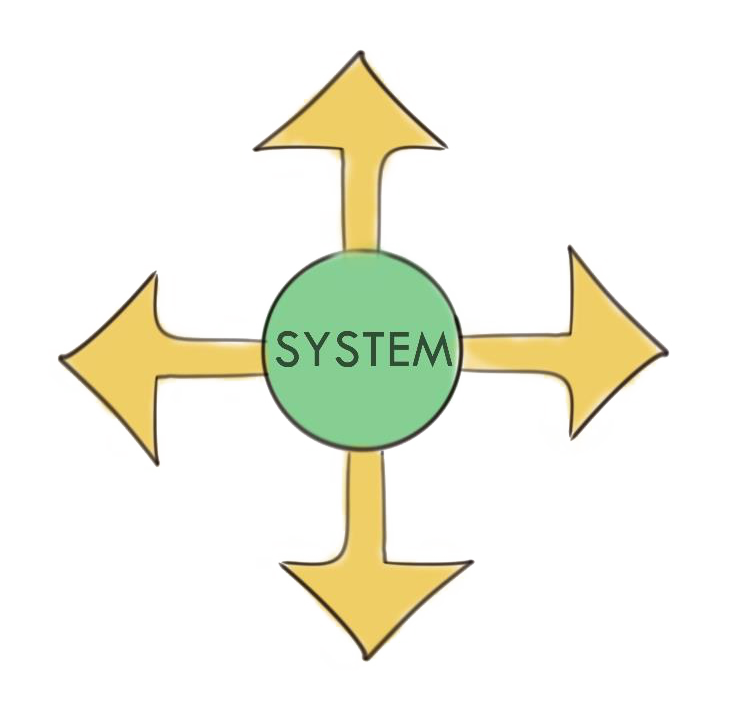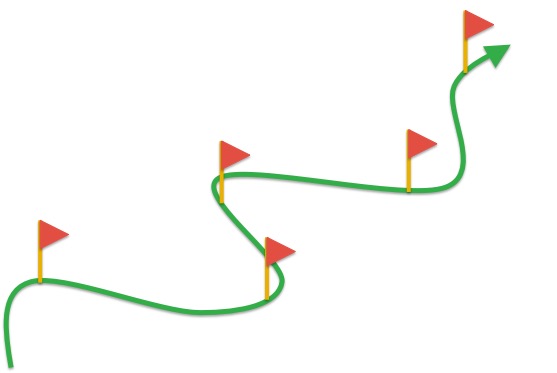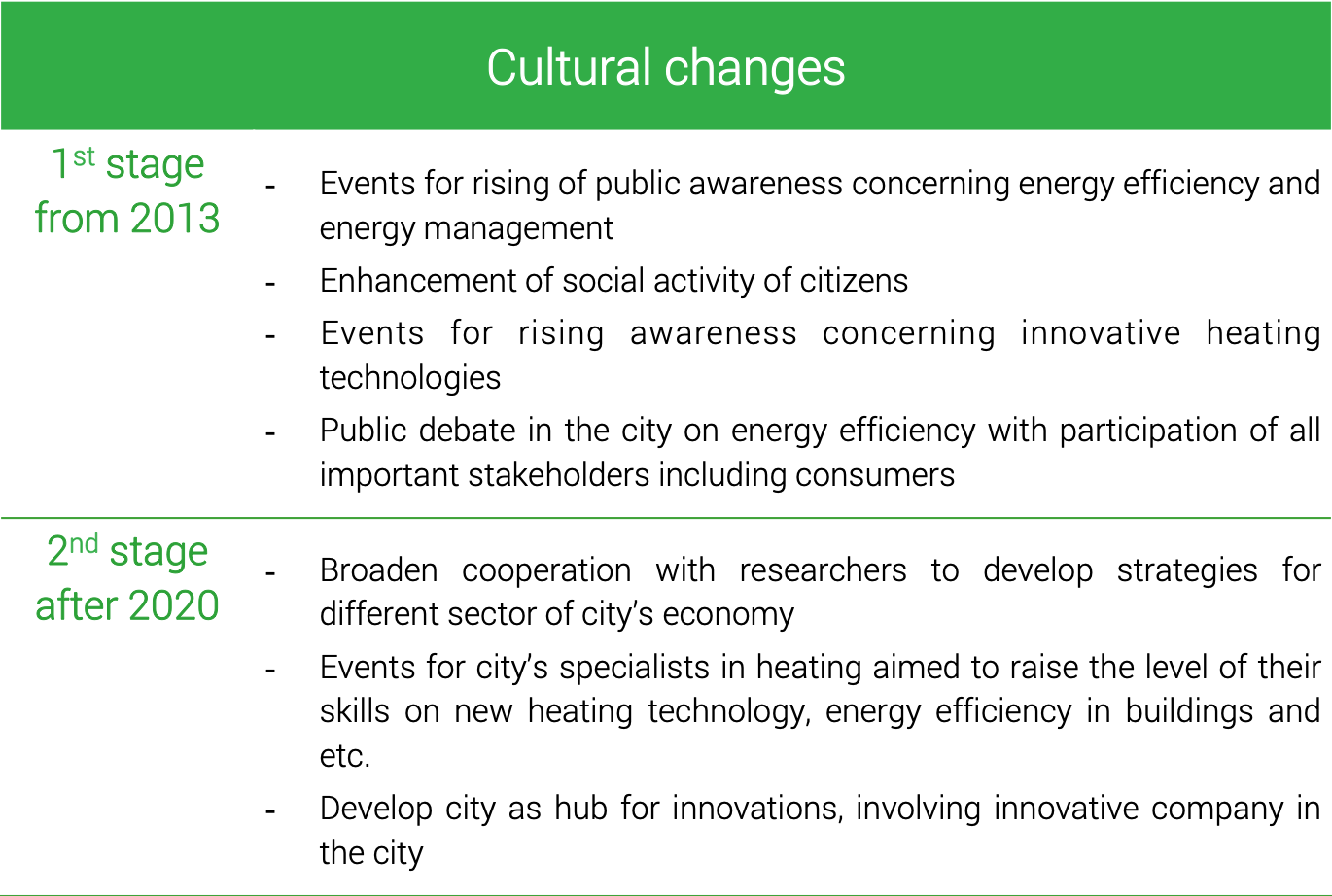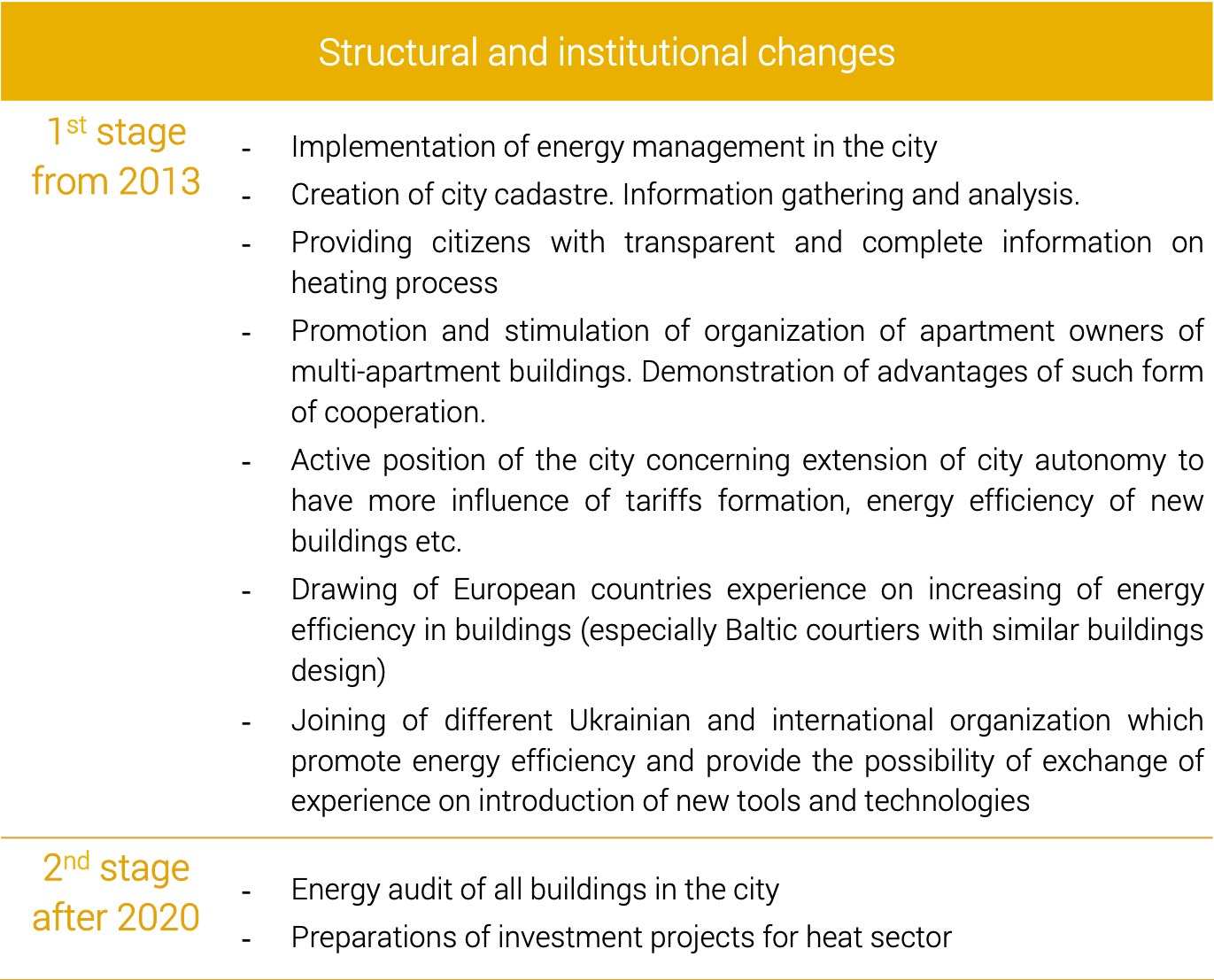11. PAthway
The development of a pathway, that is, a set of necessary changes and related actions which can realise the vision by means of the chosen solution.
At a glance
Goal
Elaboration of a set of changes that are required in order to achieve the desirable future vision by means of the chosen solution.
Input
Current situation + stakeholder analysis + vision + solution testing
Methods
Brainstorming, modelling
Relative workload
High
Output
A description of actions to be taken.
Steps
1. Identify what changes are necessary by types and develop a list.
2. Identify stakeholders to be involved in initialisation/implementation/facilitation of the changes.
3. Place the changes on the timeline from the future to the present day.
4. Identify barriers and drivers for implementation of each change.
What changes?
- Cultural changes (change of people’s mindsets, value priorities, learning/unlearning, etc.).
- Structural/institutional changes (new policies, niche growth through bottom-up initiatives etc.).
- Technological changes (new infrastructures, dismantling old infrastructures).
Remember that internal consistency and logic are crucial – make sure that the proposed changes would indeed realise your vision and internal scenario (solution), taking the current situation as well as the external trends and uncertainties that you have discovered into consideration.
Remember that the changes should be specific achievements (end states) – not processes.
Stakeholder involvement
- The identification of stakeholders may indicate the potential of different strategies (e.g. bottom-up vs. top-down approaches) to enable the same change.
- The multi-level perspective (MLP) theory and the Strategic Niche Management (SNM) tool can be useful when creating the pathways.
- Depending on the involved stakeholders, different strategies could be possible.

The “backward thinking” fashion in which the pathway is created (i.e. start from the year the vision should be realised and “go back in time” to the present day) facilitates the process of setting a feasible timeline for changes. It can also be important to consider interconnections with other sociotechnical systems.
Modelling of transition pathways can also be incorporated. This may facilitate understanding of consequences and unexpected effects.
Remember – changes take time and may be interrupted by unexpected (positive or negative) future events.
Data collection
Although you might find inspiration from previous work, keep in mind that the context of your study is unique.
For more information about data collection, see participation and context.
Participatory elements
Generally, it is advisable to consult with stakeholders about barriers and drivers as these are crucial to consider when designing the pathway. You may also want to ask stakeholders if they can think of any additional stakeholders that should be involved moving forward.
For more information about participatory elements, see participation and context.
Examples
Sustainable heating & cooling in Bila Tserkva by 2050



Additional comments
- The pathway development is – and should be – an iterative process.
- Allow for rethinking the vision and solutions along the way.
- Consider how path dependence and lock-ins may impact the pathway and how these may be overcome.
Further reading
- Quist, J., 2013. Backcasting and Scenarios for Sustainable Technology Development. In Handbook of Sustainable Engineering (pp. 749-771). Springer, Dordrecht.
- Johnstone, P., Stirling, A., & Sovacool, B., 2017. Policy mixes for incumbency: Exploring the destructive recreation of renewable energy, shale gas ‘fracking,’and nuclear power in the United Kingdom. Energy Research & Social Science, 33, 147-162.
